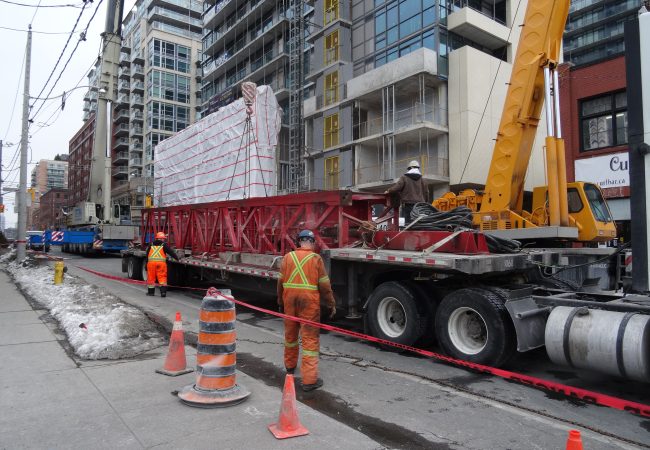New York — A 38-year-old hospital cashier was in the apartment that she rented in the Bronx. While bringing a large saucepan to the sink in the kitchen, she stepped in an oval-shaped hole in the floor, causing her to trip and fall. As she fell, the woman spilled the boiling hot contents of the pan on herself, resulting in burn injuries in 18% of her body. The victim sued for damages that she suffered due to the accident injuries after consulting with the injury lawyers at Morrison & Wagner. The woman alleged that the defendants were negligent in their maintenance of the apartment and that their negligence created a dangerous condition. Justice prevailed and they reached a $4,580,000 settlement for the trip and fall victim.
Illustrative Photo by Chris Sampson [License]
— — —
Hole in kitchen floor not timely repaired, tenant alleged (VerdictSearch)
Settlement Amount: $4,580,000
— — —
Court: Bronx Supreme, Bronx County, New York
Injury Type(s): arm; arm-scar and/or disfigurement; leg; leg-scar and/or disfigurement; leg
burns-third degree; other-scar and/or disfigurement; surgeries/treatment-skin graft
Case Type: Premises Liability – Apartment, Trip and Fall, Tenant’s Injury, Dangerous Condition, Negligent Repair and/or Maintenance
Date: January 4, 2007
Plaintiff Attorney(s):
Stuart Wagner; Morrison & Wagner; New York, NY
Eric H. Morrison; Morrison & Wagner; New York, NY
— — —
Facts:
On May 1, 2001, the plaintiff, 38, a hospital’s cashier, was in the apartment that she rented from Natasha and Hardial Singh and David and Surojni Farnum, at East 175th Street, in the Bronx. While the woman was bringing a large saucepan to the sink in the kitchen, she stepped in an oval-shaped hole in the floor, causing her to trip and fall. As she fell, the plaintiff spilled the boiling hot contents of the pan on herself, resulting in burns of her 18% of her body.
The accident victim and her family thought that she was a lawful tenant of the Singhs and Farnums. However, Wells Fargo Home Mortgage Inc. had acquired ownership of the property at a foreclosure sale on April 12, 2001, as a result of the Singhs’ and Farnums’ delinquency on their mortgage payments. No one notified the woman of the foreclosure until she received a notice of eviction from Wells Fargo two days after her accident.
The plaintiff sued Norwest Mortgage Inc., which was the original mortgagor before being acquired by Wells Fargo; the court-appointed receiver who received the property during the foreclosure action; the Singhs; and the Farnums. The injury victim alleged that the defendants were negligent in their maintenance of the apartment and that their negligence created a dangerous condition.
Wells Fargo commenced a third-party action against Mortgage Contracting Services. It alleged that it hired Mortgage Contracting Services to perform monthly inspections of the property and that Mortgage Contracting Services was at least partially responsible.
Mortgage Contracting Services commenced a second third-party action against Quantum FACS Inc., Caretaker Properties Co. and Red Hawk Properties. Mortgage Contracting Services alleged that it hired the third-party defendants to perform interior repairs on the property and that they failed to do so.
Caretaker Properties failed to appear at trial, and a default judgment was entered. The court-appointed receiver was dismissed via pretrial summary judgment because it was determined that she had no management duties for the property. The matter continued against the remaining defendants.
The plaintiff claimed that the defendants failed to repair the hole in her floor. She contended that the defendants had known of the problems with the kitchen because the City of New York’s Department of Housing Preservation and Development had regularly cited the Singhs and Farnums for code violations for hazardous disrepair to the premises, including her kitchen. She also contended that when employees from Quantum FACS and Red Hawk Properties had come by to perform repairs, she informed an inspector of the problems with her kitchen. The woman claimed that the original owners were negligent because they continued to falsely represent themselves as the owner of record and accept her rental payments. She also claimed that Wells Fargo was negligent because it was the true property owner.
The injured woman’s counsel claimed that he discovered that Wells Fargo had been penalized by the Department of Housing and Urban Development for failing to complete the foreclosure action within the time requirements of federal law.
The Singhs and Farnums contended that Wells Fargo’s acquisition at foreclosure six weeks before the woman’s accident relieved them of any subsequent liability for open and obvious defects of the premises. They further claimed that Mr. Farnum had abandoned the property shortly after the plaintiff’s family moved in and that his wife moved out one month before the accident. They moved to be let out of the case on summary judgment.
Wells Fargo contended that, as an out-of-possession owner, it had neither actual nor constructive notice, especially since it had never physically entered the premises. It alleged that Mortgage Contracting Services was responsible for any problems with the property because Mortgage Contracting Services was hired to inspect it. It also denied that it ever had contact or communication with anyone still living at the property. Wells Fargo also moved to be let out on summary judgment.
Mortgage Contracting Services asserted that its contractual responsibility to Wells Fargo was only to inspect the property from the outside and not to actually go inside or effect repairs. It also contended that it had reported to Wells Fargo that the building was occupied, but in disrepair and had hired Quantum FACS and Red Hawk Properties to do repairs that might need to be done, making them contractually indemnified. It also moved to be let out on summary judgment.
The court denied all motions for summary judgment.
Injury:
The plaintiff sustained third-degree burns throughout her legs, arms and torso. She was hospitalized for one month and underwent five separate split-thickness graft surgeries. She was left with keloid scarring of about 18% of her body surface, including her wrist, arms, legs and stomach.
The injured woman claimed that she missed three months of work as a result of her injuries. She did not need any follow-up care for her injuries after returning to work, but she claimed that she needed to see a psychiatrist on an outpatient basis five times over the ensuing five years. She sought recovery for damages for her past and future pain and suffering.
The defendants did not dispute the plaintiff’s burn scars as a result of her accident.
Result:
The matter went to mediation before retired judge Milton Mollen at JAMS/ENDISPUTE, but it settled outside of mediation for $4.58 Million prior to trial. Of the total settlement, Wells Fargo agreed to contribute $4.5 Million, and the insurer of the Farnums and the Singhs agreed to contribute $80,000 from its $100,000 policy.
— — —
Judge: Douglas E. McKeon
Editor’s Comment:
This report is based on information that was provided by plaintiffs’ and counsel of the Farnums, Mortgage Contracting Services, Quantum FACS, Red Hawk Properties, the Singhs and Wells Fargo. Counsel of Caretaker Properties, the court-appointed receiver and Norwest Mortgage was not asked to contribute.







![Illustrative Photo by U.S. Navy [Public domain], via Wikimedia Commons](https://morrisonwagner.com/wp-content/uploads/MS1_on_stretcher-150x150.jpg)
![Photo for illustrative purposes only. Photo Credit: Billie Grace Ward [License]](https://morrisonwagner.com/wp-content/uploads/2022/02/fdny-ambulance-150x150.jpg)
![Photo for illustrative purposes only. Photo Credit via Mike Goad [License]](https://morrisonwagner.com/wp-content/uploads/2022/02/nyc-fire-scene-150x150.jpg)




